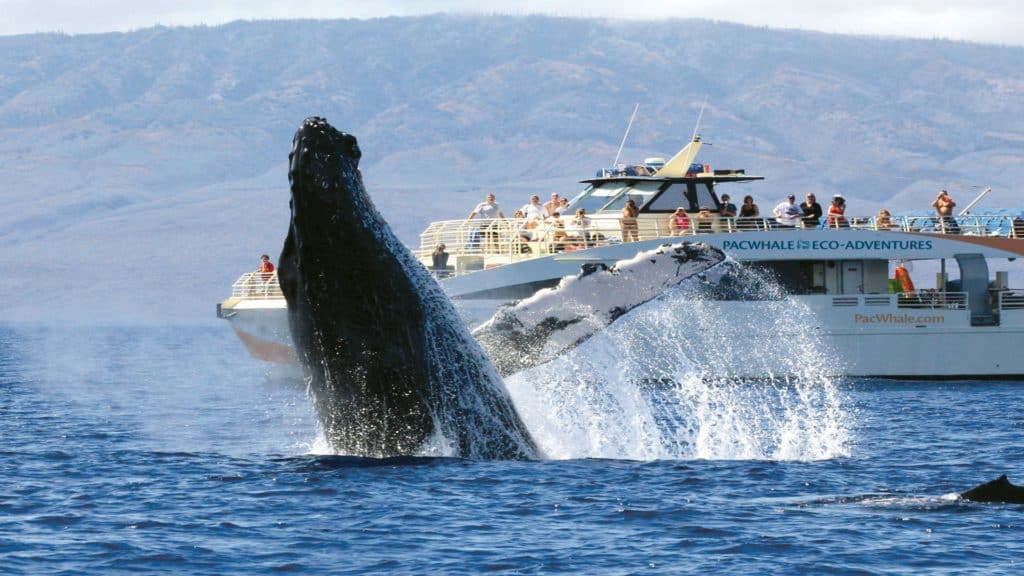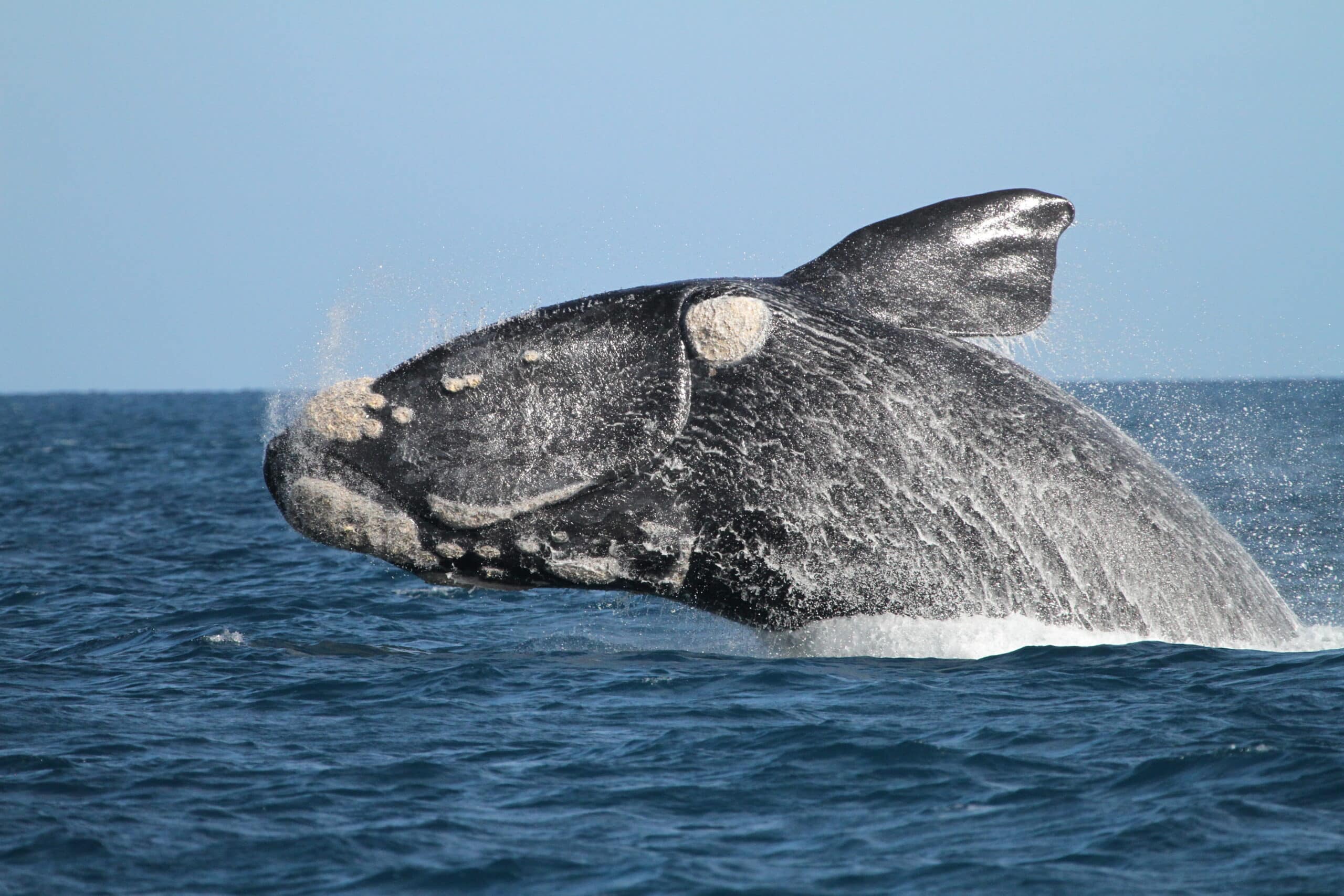Our Research Team has begun surveying the deeper waters southwest of Maui as part of our new false killer whale study. The first day of research took us ~30 nautical miles off the coast of Maui in waters >2,500 feet. Although we didn’t see any false killer whales, we did have two encounters with short-finned pilot whales, a species we do not typically observe in the near-shore waters of the Maui 4-island region. This species has distinctive bulbous heads, wide dorsal fins, and sleek black bodies. Short-finned pilot whales are sexually dimorphic, which means that males and females look different. Males typically grow to 18 ft long compared to females who grow to an average length of 12 ft. The dorsal fins on males are also larger and wider than females, making it easy to tell the two apart.
During our encounter with short-finned pilot whales, two researchers were taking above water photographs of the whale’s dorsal fins, another researcher was collecting underwater footage using a pole-mounted camera, while a fourth research was collecting detailed observations on pod behavior and composition. We observed two mother-calf pairs, two subadults, and the rest were adults, spread out into smaller sub-groups of 2-3 individuals. During the encounters we observed the pod feeding and resting at the surface of the water.
-
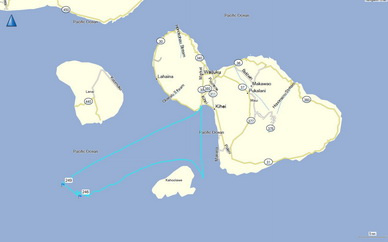
GPS track of Ocean Protector’s effort and locations of pilot whale sightings -
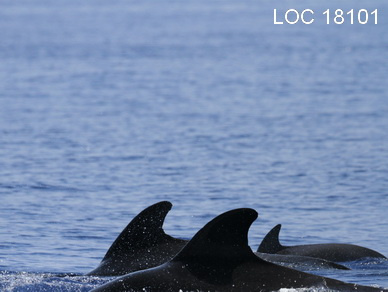
Example of dorsal fin size differences based on age class and gender -
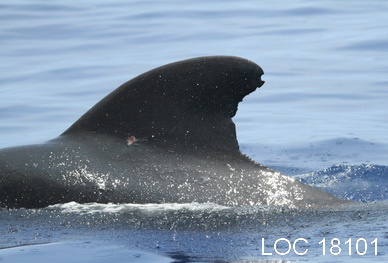
Distinct dorsal fin used for photo-identification -
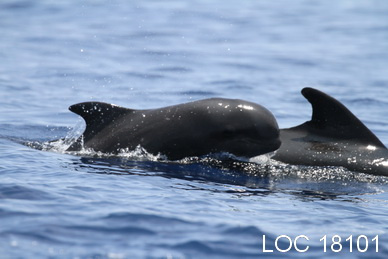
Pilot whale calf swimming alongside mom -
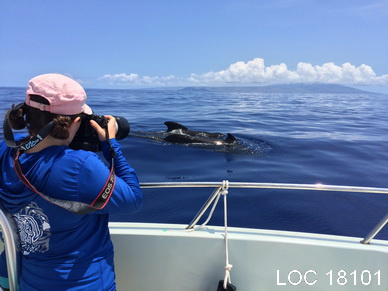
Research assistant, Jessica McCordic, collecting photo-identification data
The majority of our research takes place after our field work ends, because the data we collected in the field must be processed. This involved looking through 520 pictures of dorsal fins, assessing each image’s quality, and matching each image within the encounter to see how many different individuals we saw. After data processing was completed, we had photographically identified 19 different animals. These individuals were then compared to our existing catalog of 133 short-finned pilot whales to see if any have been previously sighted. One individual matched to our catalog and was sighted back in September 2002. The other 18 animals had never been seen before and were added as new individuals, increasing our catalog size to 152 individuals. Since we do not often see this species, it was expected that there would be many new individuals to add, as the estimated population size for the entire Hawaiian Islands EEZ is 12,422 whales (Bradford et al. 2013).
This was a very successful day offshore! Stay tuned for other research updates from this exciting new study.

